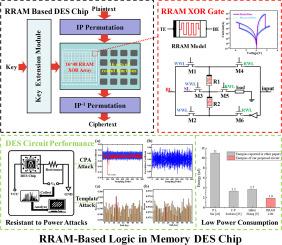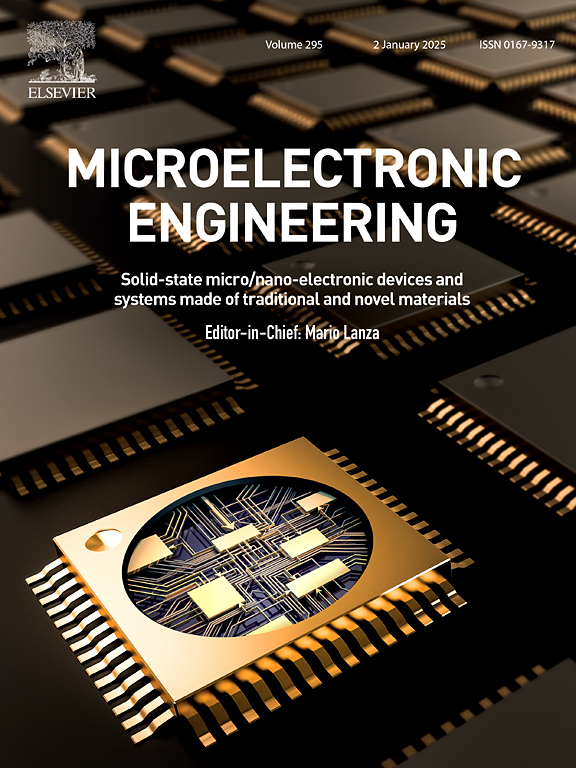一个基于ram的逻辑内存DES实现,防止电源攻击
IF 3.1
4区 工程技术
Q2 ENGINEERING, ELECTRICAL & ELECTRONIC
引用次数: 0
摘要
加密是数据安全的一个重要方面,数据加密标准(DES)是第一个获得全球认可的加密算法。然而,由于DES依赖于传统的von Neumann架构,存在资源消耗高、传输延迟、易受基于功率的攻击等问题。为了解决这些挑战,本文介绍了一种使用电阻式随机存取存储器(RRAM)的内存逻辑(LIM)加密电路。这种方法通过最小化CPU和内存之间的密钥传输来降低密钥拦截的风险。在Xilinx Spartan-6 FPGA上实现了DES算法,并采用相关功耗分析和模板攻击进行了功耗分析。结果表明,该加密电路比传统设计具有更好的抗功率攻击能力。本文章由计算机程序翻译,如有差异,请以英文原文为准。

A RRAM-based logic in memory DES implementation against power attacks
Encryption is a crucial aspect of data security, and the Data Encryption Standard (DES) was the first encryption algorithm to gain global recognition. However, due to its dependence on the traditional von Neumann architecture, DES suffers from high resource consumption, transmission delays, and vulnerability to power-based attacks. To address these challenges, this paper introduces a logic-in-memory (LIM) encryption circuit using resistive random-access memory (RRAM). This approach reduces the risk of key interception by minimizing key transfers between the CPU and memory. The DES algorithm was implemented on a Xilinx Spartan-6 FPGA, and power consumption was analyzed using correlation power analysis and template attacks. The results demonstrate that the proposed LIM encryption circuit has better power attack resistance than the conventional designs.
求助全文
通过发布文献求助,成功后即可免费获取论文全文。
去求助
来源期刊

Microelectronic Engineering
工程技术-工程:电子与电气
CiteScore
5.30
自引率
4.30%
发文量
131
审稿时长
29 days
期刊介绍:
Microelectronic Engineering is the premier nanoprocessing, and nanotechnology journal focusing on fabrication of electronic, photonic, bioelectronic, electromechanic and fluidic devices and systems, and their applications in the broad areas of electronics, photonics, energy, life sciences, and environment. It covers also the expanding interdisciplinary field of "more than Moore" and "beyond Moore" integrated nanoelectronics / photonics and micro-/nano-/bio-systems. Through its unique mixture of peer-reviewed articles, reviews, accelerated publications, short and Technical notes, and the latest research news on key developments, Microelectronic Engineering provides comprehensive coverage of this exciting, interdisciplinary and dynamic new field for researchers in academia and professionals in industry.
 求助内容:
求助内容: 应助结果提醒方式:
应助结果提醒方式:


